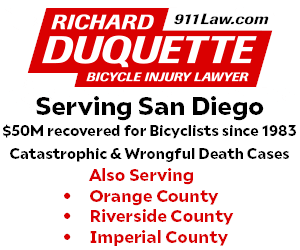The hum of tires. A clean line through a corner. The rush of a fast pack. And then—gravel, heat, and skin on asphalt.
No one plans to crash, but if you ride long enough—fast enough—it’s not a question of if, but when. Whether it’s a tight crit, a casual group ride, or a solo effort gone sideways, cyclists know that the road can leave a mark. Few injuries are more familiar—or more brutal—than road rash.
It’s the badge you never wanted: raw skin, stinging pain, and a recovery that feels slower than it should. While common, road rash isn’t something riders should shrug off. How you protect your skin, respond to a crash, and care for wounds afterward can make the difference between a minor scrape and a lingering setback.
Let’s get into what every cyclist should know to keep skin on the body—and off the pavement.
What Is Road Rash and Why Cyclists Get It
Road rash occurs when skin comes into contact with pavement at high speed. Technically, it’s an abrasion—a type of open wound caused by sliding across a rough surface. The top layers of skin are stripped away, leaving behind raw, painful tissue that’s prone to infection, scarring, and delayed healing.
For cyclists, it’s practically a rite of passage. High speeds, minimal protection, and unpredictable surfaces make it one of the most common injuries in the sport. A touch of wheels in the peloton, a missed line in a corner, or a driver cutting too close can end in a sudden fall and a brutal slide. Lightweight kits offer little resistance when skin hits the deck, and it doesn’t take much—20 mph on rough chipseal can shred you in seconds.
In many cases, road rash heals without complications. But some injuries go deeper. Severe abrasions can expose muscle, lead to infection, or be part of a broader trauma. And when crashes involve a vehicle, another rider’s negligence, or poorly maintained roads, the consequences—and responsibilities—change.
That’s why it’s essential to understand the full impact of road rash injuries in bicycle accidents. It’s not just a scrape. It’s a serious injury with medical and legal implications, especially when someoneelse’s actions contributed to the crash.
How to Prevent Road Rash on Your Rides
You can’t control everything on the road, but a few smart choices—before and during the ride—can reduce the odds of leaving skin behind on the pavement.
Dress to Protect, Not Just Impress
Modern kits often feature aerodynamic cuts and enhanced ventilation. That usually means thinner fabric and less coverage. But not all gear is created equal when it comes to crash protection. Look for abrasion-resistant fabrics, especially in high-impact zones such as the hips, shoulders, and thighs. Some kits now come with reinforced panels that reduce the impact of a slide.
Gloves matter too. Beyond grip, they protect the palms, one of the first things to hit the ground. And while sleeveless kits are tempting in the heat, exposed skin gives the road a bigger target.
Mind the Tactics
Most crashes aren’t reckless—they’re the result of small errors at speed. Hold your line through corners. Avoid abrupt movements in the pack. Stay alert during the last few miles of a long ride. It’s often the routine rides, not the races, that catch people off guard.
Riding with a group? Communicate clearly. A missed pothole call or sudden swerve can take out more than just your front wheel.
Know Your Terrain
Local knowledge counts. Loose gravel on a descent, slick spots after a drizzle, or that one intersection with torn-up pavement—knowing where the hazards live gives you an edge. If you’re riding somewhere new, ease into it. Scout the route, and stay alert until you’ve got a feel for the surface.
First Aid – What to Do Immediately After a Crash
The crash is over. Now comes the part that shapes recovery.
If you’re able, move off the road and assess the damage. Road rash can look nasty—torn kit, blood, embedded grit—but stay calm. Clean, cover, and reassess.
1. Clean the Wound—Thoroughly
Start by flushing out any debris—dirt, gravel, and bacteria are the biggest threats in the first few hours. Rinse the wound thoroughly with clean water or sterile saline. Skip the hydrogen peroxide and alcohol; they can damage healthy tissue and slow the healing process. If all you have is mild soap and water, that’ll do. And if grit stays lodged deep, don’t dig—let a medical pro take care of it.
2. Disinfect and Cover
Apply antibiotic ointment and a non-stick dressing. For larger wounds, hydrogel pads or second-skin bandages are effective options. Change dressings daily or more often if they get dirty or soaked.
If you’re unsure whether the wound is healing normally, learn what to look for in a properly treated abrasion and don’t hesitate to see a doctor. Infection is a real threat, especially when bacteria hide beneath debris.
3. Pain and Mobility
Take OTC pain meds if needed. But listen to your body. If road rash is accompanied by swelling, limited range of motion, or deeper pain, seek medical attention.
And if you hit your head—helmet or not—take it seriously. Concussions aren’t always immediately apparent.
Road Rash Recovery and Getting Back on the Bike
The pain fades, but healing takes more than time. How you treat your skin during recovery affects comfort and long-term scarring.
Keep It Covered, Keep It Clean
Avoid the old-school “let it air out” approach. Moist wound care is best. Use non-stick dressings, reapply ointment, and change bandages daily. It speeds healing and keeps bacteria out.
Avoid pools, lakes, and bathtubs until the wound has fully closed. If a dressing sticks, loosen it gently with warm water—never tear it off dry.
Ease Back into Riding
Once the wound seals and shows no signs of infection, ease back into riding. Short, low-intensity rides help test your comfort level. Use clean, snug-fitting gear and skip dirty or dusty routes.
If the wound’s in a friction zone—hip, shoulder, knee—consider an extra base layer or soft barrier to reduce irritation.
Scar Care
Once the skin’s closed, keep it moisturized and out of the sun. Scar tissue burns easily and can take months to mature fully.
If pain or redness returns later, consult a doctor. A healed surface doesn’t always mean the tissue underneath is healthy.
When Road Rash Isn’t Just Skin Deep – Legal and Liability Insights
Sometimes a crash is just bad luck. But when another rider’s move or a motorist’s carelessness causes it, things get more complicated.
In races, risk is expected, but that doesn’t mean everything goes as planned. Dangerous conduct, poor course design, or a lack of communication can still result in liability. On public roads, if a car forces you into a crash, even without contact, you may have grounds for a claim.
If there’s any chance someone else was involved, document everything. Take photos. Talk to witnesses. Seek medical attention, not just for your health but for your records.
Some cyclists dismiss road rash as “not serious enough” to report. But if it’s part of a larger injury—broken bones, missed work, lasting damage—it’s not minor. It’s part of the story.
It also helps to stay current on how to prevent the most common cycling injuries. Knowing what typically leads to crashes—whether it’s poor positioning in a pack, fatigue-fueled mistakes, or simple lapses in focus—can make you more alert in the moments that matter. The more you understand the patterns behind common falls, the better equipped you are to ride proactively instead of reactively. It’s not just about avoiding injury; it’s about becoming a smarter, more resilient cyclist every time you clip in.
Conclusion
Crashes happen. It’s part of the sport. But how you prepare—and how you respond—can shape everything that comes after.
Road rash is painful, messy, and all too familiar. However, with the right gear, smarter tactics, and proper care, you can protect your skin and recover more quickly when things go wrong.
Ride hard, ride sharp, and keep your skin where it belongs.
Photo Christy Nicholson / EchelonDesignPhoto.com
No products found.















